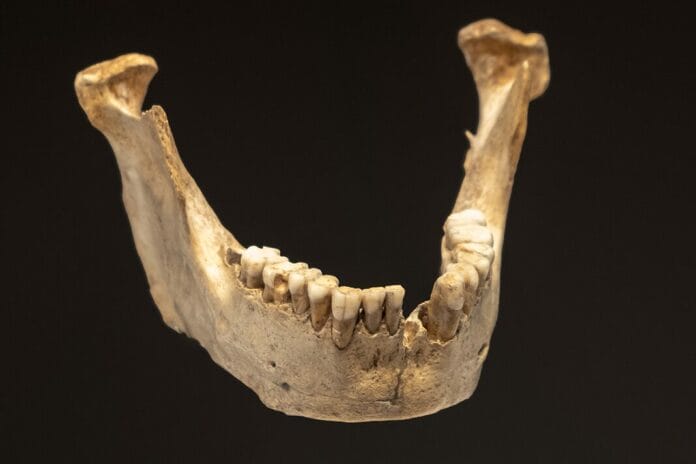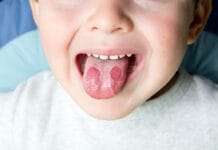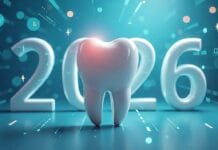A study conducted by researchers from Trinity College Dublin, in collaboration with archaeologists from Atlantic Technological University and the University of Edinburgh, has discovered insights into the evolution of oral microbiomes. The study analyzed the microbiomes extracted from two remarkably preserved teeth, dating back 4,000 years, that were unearthed from an Irish limestone cave.1
The Study
Two sets of molars discovered within the depths of a limestone cave in Killuragh, County Limerick, Ireland, were utilized for extraction of aDNA for analysis. These molars, attributed to an adult male, were carefully sampled at two distinct points – both from their roots and crowns. The metagenomic compositions of these four samples were examined and compared with ancient sequence data sourced from dental calculus and other dental remains available in public records.1
The study, led by Dr. Lara Cassidy, an assistant professor at Trinity’s School of Genetics and Microbiology, identified significant transformations in the oral microenvironment spanning from the Bronze Age to the contemporary era. Both teeth, belonging to the same male individual, offer a glimpse into his oral health status, providing data for understanding changes in bacterial gene pathogenicity.2
The Results
Genetic analyses revealed an abundance of bacteria associated with periodontal disease and dental caries. Despite the absence of visible dental caries, one tooth exhibited an abundance of S. mutans DNA, indicating a precarious imbalance in the oral microbial community before the individual’s death.1
Although S. mutans are prevalent in modern oral microenvironments, S. mutans remains exceptionally rare in ancient genomic records, partly due to its acid-producing nature, which impedes the fossilization of biofilm DNA.1
The scarcity of S. mutans in ancient microbiomes may also be attributed to the diet during that time. The adoption of cereal agriculture thousands of years ago and the introduction of sugary foods in recent centuries have created favorable environments for this bacterial species.1
The study further suggests a decline in microbial diversity over time, which can impact human health. Strains of T. forsythia, implicated in periodontal disease, exhibited considerable genetic divergence in the ancient samples, highlighting a loss of diversity compared to modern microbiomes.1
By examining prehistoric microbial diversity, profound shifts in the oral microenvironment over centuries were identified. Notably, the dominance of specific bacterial lineages, including T. forsythia and S. mutans, has escalated in tandem with cultural transitions, particularly during the industrial era marked by widespread sugar consumption.1
Conclusion
Adding a temporal aspect to the study of pathogen genomics allows for a better understanding of how pathogens evolve over time and helps in conserving genetic diversity that might otherwise be lost due to extinction. The study reconstructed ancient genomes of T. forsythia and S. mutans, identifying significant fluctuations in oral pathobiont population dynamics and functional composition over the past 750 years.1
Notably, both species exhibit a noticeable contrast between postindustrial and earlier genomic profiles regarding virulence factors. This contrast is most pronounced in T. forsythia, where a chronological progression of ancient genomes reveals distinct functional repertoires between preindustrial and industrial/modern counterparts. These alterations likely influence the host’s immune response and interactions with other oral microorganisms.1
The findings underscore the interaction between microbial evolution and cultural transitions, shaping the trajectory of oral health across millennia. Despite the evolutionary transformations observed, the study emphasizes the diversity within S. mutans populations, attributed to their remarkable ability to exchange genetic material and adapt to changing environments.1
Before you leave, check out the Today’s RDH self-study CE courses. All courses are peer-reviewed and non-sponsored to focus solely on high-quality education. Click here now.
Listen to the Today’s RDH Dental Hygiene Podcast Below:
References
- Jackson, I., Woodman, P., Dowd, M., et al. Ancient Genomes From Bronze Age Remains Reveal Deep Diversity and Recent Adaptive Episodes for Human Oral Pathobionts. Mol Biol Evol. 2024; 41(3): msae017. https://academic.oup.com/mbe/article/41/3/msae017/7617356
- Trinity College Dublin. (2024, March 27). Scientists Extract Genetic Secrets From 4,000-Year-Old Teeth to Illuminate the Impact of Changing Human Diets Over the Centuries. ScienceDaily. www.sciencedaily.com/releases/2024/03/240327124735.htm











